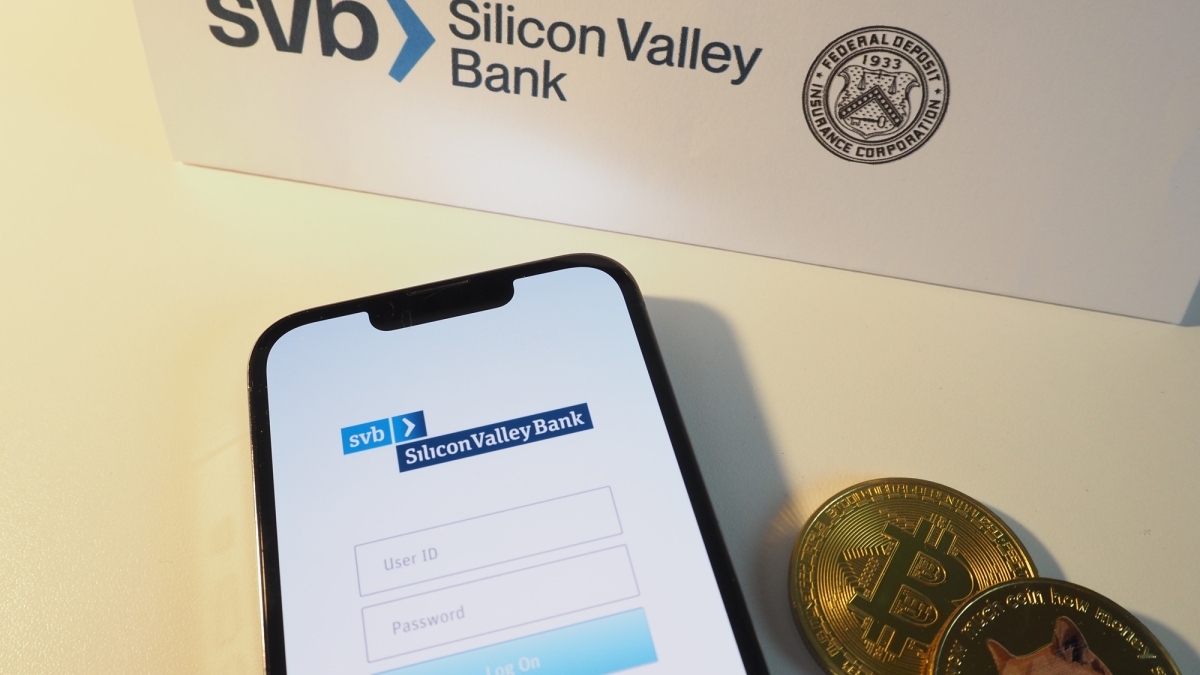In a matter of days, Silicon Valley Bank (SVB) in California went from belly up to being rescued.
The institution, which catered to tech startups worldwide and had the backing of billionaire entrepreneurs is now considered the most significant bank failure since the Great Recession.
And there’s a tie to the Valley of the Sun: More than a decade ago, the bank put down roots at an upscale office at Tempe’s Hayden Ferry Lakeside.
The Biden Administration recently announced it would assist the bank’s depositors, but not its executives or shareholders. This fiasco is playing out in real-time and offers more questions than answers.
What went wrong will undoubtedly sort itself out through multiple federal investigations, Congressional hearings and the court system. But what is the immediate path moving forward?
Dennis Hoffman, director of the L. William Seidman Research Institute at the W. P. Carey School of Business and director of ASU's Office of the University Economist, provided a few answers for ASU News as this story unfolds.
Dennis Hoffman
Question: This is a complex story. In a nutshell, can you explain what happened?
Answer: SVB failed to adequately plan for the possibility that it would experience a significant loss of depositors. Its assets were neither sufficiently liquid nor sizeable to compensate for the loss of deposits, and it could not tap other resources in time to stem the tide.
Q: SVB was a unique bank with a singular purpose, and the investors weren’t mom and pops. Can you explain the importance of this bank and the significance of its failure?
A: SVB catered to entrepreneurs and innovators in its loan portfolio, and its deposits were primarily comprised of large tech firms and venture capitalists. When these depositors became unsettled and withdrew, contagion took over and the bank couldn’t recover.
Q: This occurred during a time of light deregulation. It appears that whenever a failure like this happens, it’s during this period.
A: We’ll learn a lot more in the next several months. But many community banks lobbied Congress for regulation relief in 2018. Some of the tightest provisions of the Financial Choice Act (previously Frank-Dodd) were removed for smaller banks; the reform bill passed with a broad bipartisan majority. As of the story, it remains unclear whether the more onerous regulatory restrictions would have prevented this default. Indeed, the asset portfolio of SVB was in pretty good shape. Its reliance on large depositors with the ability to quickly move large sums of deposits proved to be the bank’s undoing. It’s unclear whether the complete Financial Choice Act would have accounted for that in a manner that would have saved the bank.
Q: What should we be doing in the future to curtail this atmosphere?
A: Bank owners will police themselves to some degree. The owners and employees of SVB are out of business and incurred significant losses. Similarly, situated banks will try to avoid falling into a similar situation. More consolidation would help prevent this, but it’s not clear that less competition in banking is good for the consumer. Once the final report on SVB is complete, we’ll probably have a new round of regulations to prevent this from happening again.
Q: The government has stated that they will bail out the bank. How does this benefit the country and our citizens?
A: This is not true. Depositors were protected to prevent national depositors from pulling money from banks. The owners of SVB lost their business. Stock shareholders in SVB lost everything. They’re not being bailed out.
Q: Is it fair or accurate to say that we, the taxpayers, will be bailing out this bank, and if yes, how will this impact us in the short and long run?
A: The depositor money will be recouped by FDIC (Federal Deposit Insurance Corp.) funds, which come from fees paid by all banks. So fees will be going up. As banks pass those costs to customers, the burden will spread. It seems like a small price to maintain the financial system's stability. You can read about “Wildcat Banking” in the 1800s before we had regulations. Things were far worse than the events of this past week with SVB.
Q: What’s the big lesson to be learned here?
A: The lesson will fall mainly on bank risk evaluators. If your bank has a fragile deposit base that can vanish in a few days, you must have access to ready liquidity (cash). And in the face of any potential run on your bank, you must be prepared to calm the waters. If you can’t do this, you won’t last long as a bank owner or investor.
Top photo illustration courtesy iStock/Getty Images
More Business and entrepreneurship

With help from ASU and a viral TikTok, an entrepreneur soars
Nearly five years ago, Ruben Trujillo saw his entrepreneurial dream slipping away as he wondered how he would pay his rent.Now, Trujillo’s business, Café Emporos, is featured on a national TV…

Honoring 2 decades of entrepreneurial impact on a global scale
Thunderbird for Good, the impact-driven initiative of Thunderbird School of Global Management at Arizona State University, is marking two decades of educational programs and initiatives dedicated to…

ASU and GoDaddy launch Student Athlete Venture Studio
In a groundbreaking initiative aimed at empowering college athletes beyond their playing careers, Arizona State University and GoDaddy teamed up to launch the first-of-its-kind Student Athlete…



